I had to rebuild the blog (with Naomi’s help!) so things might be a bit wonky or missing for the next few days, while I reinstall all the necessary plugins, rebuild galleries, etc.
Obi Bundle Part III – Fukuro Obi
I continue to make ploddingly slow progress when it comes to my share of the obi bundle. Today, the fukuro obi.
Gold and white fukuro obi with traditional patterns
I love the variation of traditional kimono textures and patterns on this obi. I’ve needed a traditional white and gold obi to pair with kurotomesode for quite some time now, so I’m very pleased I managed to get this one. Another interesting note about it – unlike most modern fukuro obi, which are only patterned on the visible areas, this one is fully patterned down the entire length. This will allow for much more leeway when it comes to tying it.
Gold and seafoam green fukuro with round karabana and clouds
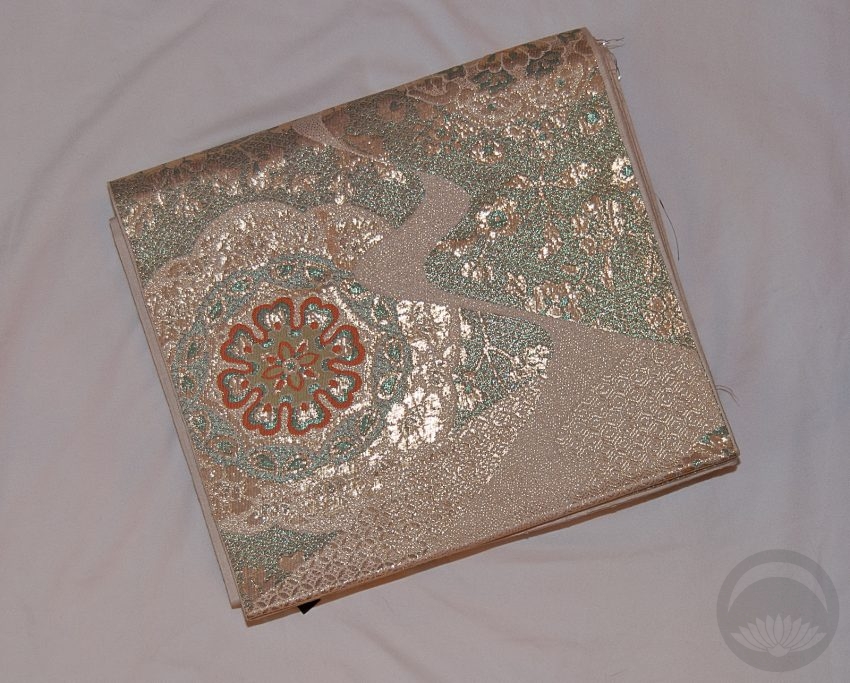
Okay, this one? IMPOSSIBLE to photograph properly. It’s just waaaaay too shiny. It’s not the sort of thing I’d normally consider my tastes, but I love the soft seafoam green colour, and the gold has this really interesting irridescent shift to it, so I couldn’t resist. I have no idea what I’ll pair it with, but I don’t care. It’s gorgeous!
Plum fukuro with kiku
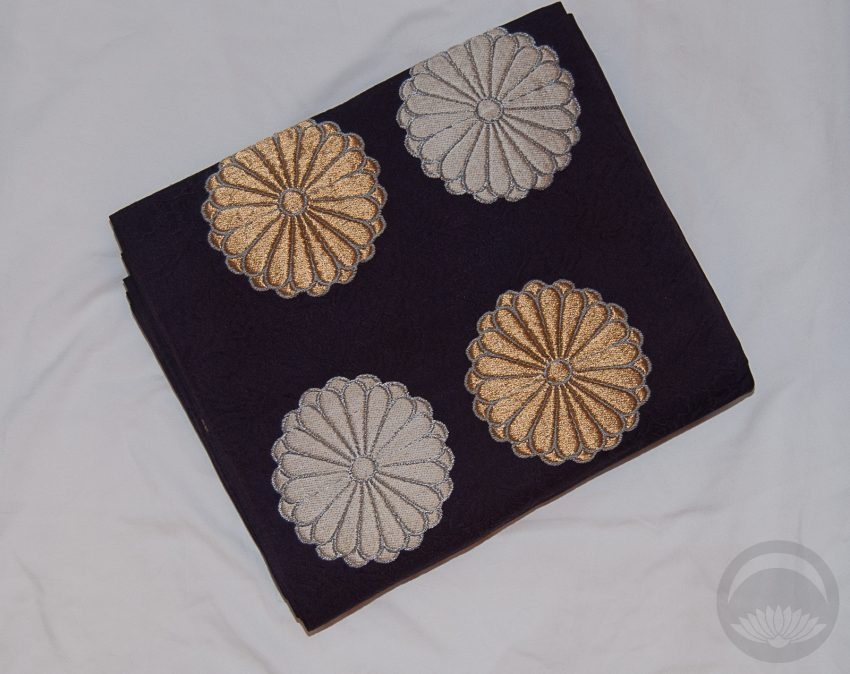
This one is really interesting. At first glance it’s sort of dull and drab, even the gold and silver of the kiku is muted compared to most modern fukuro obi. However, the fabric is incredibly lush and rich-feeling, and the base is very unique. It’s a heavy rinzu of kiku leaves, so it’s almost as if the flowers are sitting on a bed of plants. The colour is also impossible to describe – in some lights it’s a plummy eggplant purple, and in some it’s sort of an espresso brown. I can’t stop looking at it, because there’s always something new to see. It’s so subtle, but so unique.
Cream fukuro with pastel tachibana
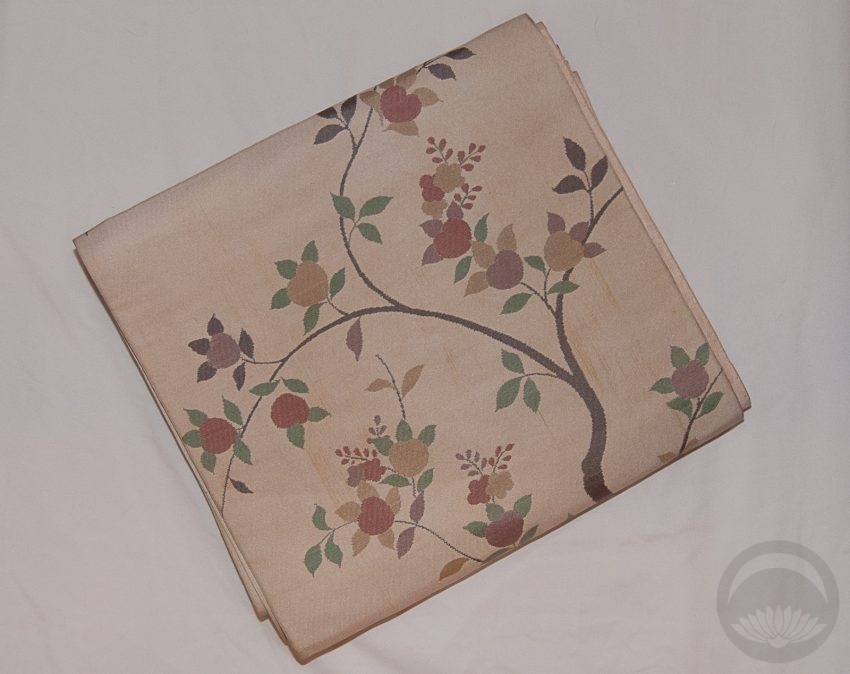
This poor beautiful baby has a fair amount of age-related patina, and due to the pale base colour it’s quite visible. However, I’m sure I can find a way to wrap and tie it so that the worst parts are hidden. I love tachibana so I had to give this one a chance.
Oh I’m a lumberjack, and I’m okay!
Oh I’m a lumberjack, and I’m okay!
I sleep all night and I work all day!
I’d been waiting for the right opportunity to wear my lumberjack kimono, and I was starting to worry winter would come and go before I had the ideal combination of weather and free time. I guess the universe took pity on me, because we had a rather spectacular blizzard overnight!
I decided to pair it up with my ume and momiji tsuke-obi, since it seemed seasonal, thematically appropriate, and practical. I dressed in a sort of comfortable casual style, forgoing a proper juban for a turtleneck and a pair of tights. I figured the ridiculous hat and boots completed the outfit well.
I only realised as I was getting undressed that I’d forgotten my obijime – the perils of wearing a tsuke-obi, I suppose! I think it’s fine in this particular case though, since my kitsuke is so non-conventional to begin with.
And in case you don’t know where the title and opening bit of this entry come from, I present to you, The Lumberjack Song, from Monty Python:
Back in the Saddle – Maybe?
So you may have noticed that even though I’ve been blogging with some regularity, I haven’t posted a photo of myself wearing a kimono in over six months now. There’s a reason for that – hardly any of them fit me anymore. I’ve gained a significant amount of weight recently, seemingly a combination of side-effects from certain medications and water retention and a whack of other health-related problems. My health also hasn’t been stellar in the past few months, I’ve been more prone to fainting than usual, I get tired incredibly easily, and I just hurt everywhere.
But it was really frustrating me that I hadn’t worn kimono in so long, so I decided to see if I could wear this gorgeous irotomesode, at least for photos. I wouldn’t be comfortable going out in public like this since I had to jury-rig the obi and there’s barely any overlap in the front, but I do really like how well the kimono and obi work together.
How I personally look in them is another story entirely, and I fervently hope that next time I see the neurologist he tells me I am a candidate for corrective brain surgery, because I think that will help me feel a lot better and work on getting back into shape. Until then though, I think I’m going to have to stick to easy casual kitsuke with large modern komon, and take it easy.
Items used in this coordination
- Blue with Embroidery
- Orange and White Arabesque
- White with Red Shibori
- Shades of Indigo
Chidori Obidome
This adorable obidome was one of the awesome things in the last box of goodies Kansai_gal sent me. I love chidori, but I also love the amusing multi-faceted aspect of this particular piece.
- Chidori
Chidori is the Japanese term for plover (a type of small wading bird), and when it comes to kimono the term generally refers to depictions of this bird. The depictions can be realistic, or very stylised, much like the depiction of the silver bird on this particular piece.
However, due to the similarity in appearance, the Japanese name for the houndstooth pattern on the background is also referred to as chidori. So this particular piece is technically chidori-on-chidori! Isn’t that cute?

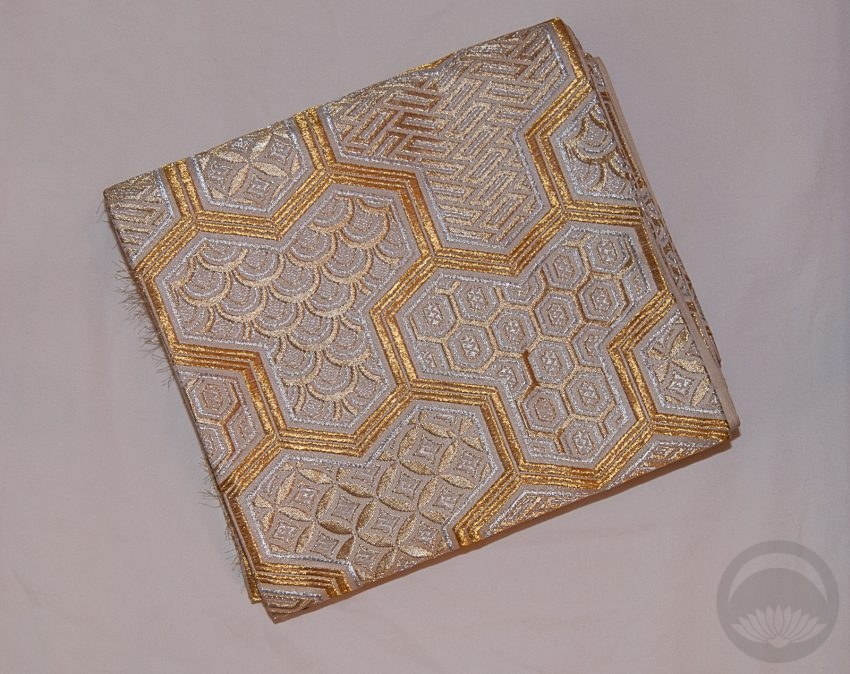
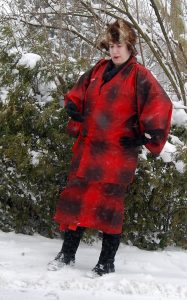

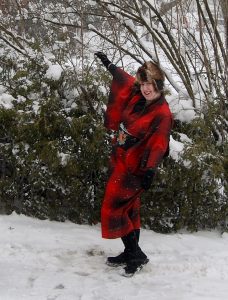
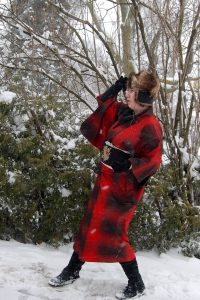
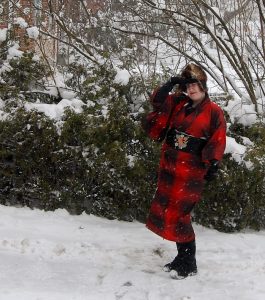
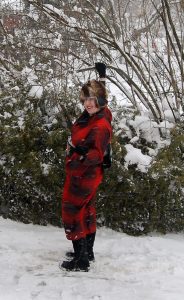
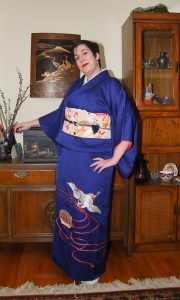

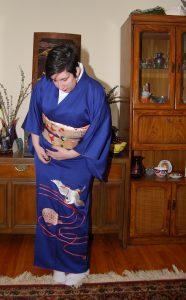
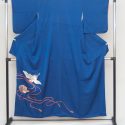
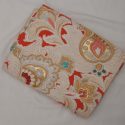

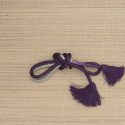
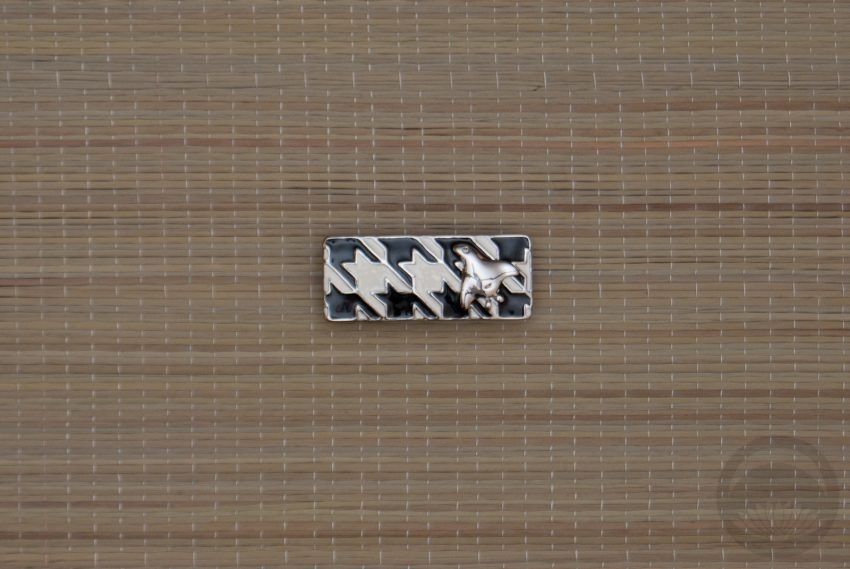





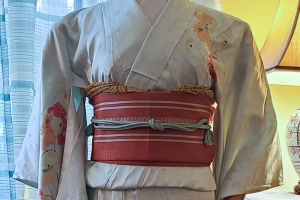

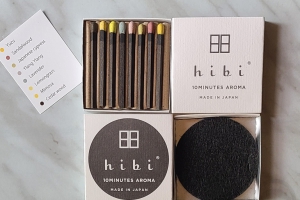
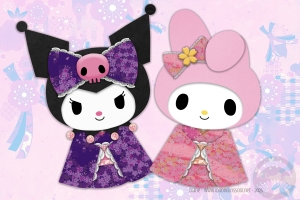
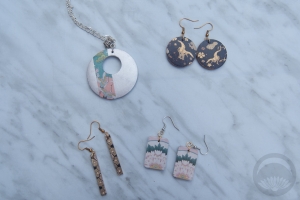

 Bebe Taian
Bebe Taian CHOKO Blog
CHOKO Blog Gion Kobu
Gion Kobu